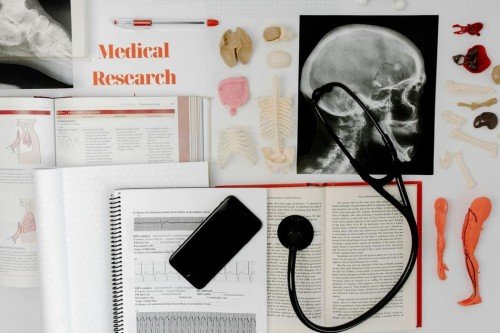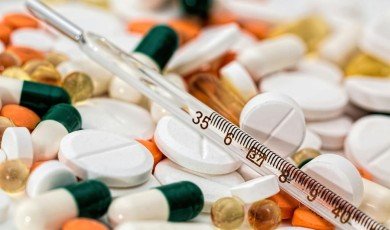
The COVID-19 pandemic has highlighted the critical role of global communication in healthcare. Viruses do not respect borders, and the rapid spread of infectious diseases underscores the need for accurate, timely, and accessible medical information worldwide. As researchers, healthcare professionals, and governments work to contain outbreaks, one tool has proven indispensable: medical translation. By bridging language barriers, medical translation ensures that critical information, research findings, and public health guidelines are accurately communicated across countries and cultures.
From pandemic response to patient education, medical translation is a key component in the fight against COVID and other viral threats. It enables healthcare systems to operate efficiently, facilitates global research collaboration, and helps prevent misinformation that can have life-threatening consequences.
The Importance of Medical Translation in Viral Outbreaks
When a new virus emerges, rapid response and clear communication are crucial. Medical research findings, clinical protocols, and treatment guidelines must be disseminated globally to support evidence-based decision-making. In this context, translation is not a luxury—it is a necessity.
Accurate translation services for healthcare ensure that:
-
International research teams understand and implement protocols consistently.
-
Governments can distribute public health information effectively in multiple languages.
-
Medical professionals worldwide can access timely updates on treatment methods and preventive measures.
Without precise translation, critical information may be misunderstood or delayed, compromising patient care and public health outcomes.
How Translation Supports Research and Collaboration
The fight against COVID and other viruses has been a global effort. Scientists from multiple countries have shared research findings, genomic sequences, clinical trial results, and epidemiological data. Accurate translation allows these findings to be shared in real time, fostering collaboration and accelerating the development of treatments and vaccines.
Medical translation services provide a bridge between languages, ensuring that complex scientific terminology and clinical nuances are preserved. This accuracy is vital when dealing with viruses, where minor errors in communication can have serious consequences for research outcomes and patient safety.
By enabling clear, multilingual communication, translation services help global teams:
-
Collaborate on vaccine development and antiviral therapies.
-
Share epidemiological data to predict outbreaks and implement interventions.
-
Translate peer-reviewed studies for international journals, ensuring accessibility to a broader scientific audience.
Supporting Healthcare Professionals and Patients
Healthcare professionals are on the frontlines of viral outbreaks, often working with diverse populations. Multilingual patients may struggle to understand symptoms, treatment options, or preventive measures. Here, medical translation plays a pivotal role in ensuring patient comprehension and safety.
Translated materials, such as patient information leaflets, consent forms, and treatment guidelines, enable healthcare workers to communicate effectively with patients from different linguistic backgrounds. This enhances patient compliance, reduces errors, and supports public health initiatives, especially during pandemics.
Translation services for healthcare extend beyond written documents. Interpreters and real-time translation services allow doctors and nurses to interact with patients directly, providing immediate, accurate guidance in critical situations. This is particularly important in hospitals treating COVID patients from diverse communities or regions.
Combating Misinformation Through Accurate Translation
The COVID-19 pandemic has also been marked by an "infodemic"—a surge of misinformation that spreads rapidly across borders. Mistranslation or poor communication of medical information can amplify false narratives, putting public health at risk.
Accurate medical translation ensures that official guidance from health authorities is correctly interpreted and disseminated. It allows governments, NGOs, and healthcare providers to reach multilingual populations with clear, authoritative messages about vaccination, mask-wearing, social distancing, and treatment options.
The Role of Technology in Medical Translation
Advancements in technology have enhanced the efficiency and accuracy of medical translation. AI-assisted translation tools, cloud-based platforms, and translation memory systems help handle large volumes of content quickly. These tools are particularly useful during pandemics, when research papers, treatment protocols, and public health notices need rapid dissemination.
However, human oversight remains essential, especially for nuanced medical content. Professional translators with expertise in healthcare ensure that context, terminology, and cultural sensitivity are maintained, preventing misinterpretation that could compromise patient safety.
Medical Translation During COVID
-
Global Vaccine Trials: Multinational clinical trials required accurate translation of protocols, patient consent forms, and research data. Medical translation ensured consistency across countries and compliance with regulatory requirements.
-
Patient Education Campaigns: Governments and hospitals distributed multilingual guides to educate populations about COVID symptoms, prevention measures, and vaccination. Accurate translation increased understanding and adherence.
-
Telemedicine Expansion: With the rise of telehealth during the pandemic, translation services enabled doctors to communicate with patients remotely in multiple languages, supporting access to care and reducing disparities.
The Future of Medical Translation in Viral Outbreaks
As viruses continue to emerge and spread, the role of medical translation will remain critical. Future trends include:
-
Real-time Translation in Healthcare: AI-driven interpretation combined with professional oversight to support patient care and clinical collaboration.
-
Global Data Sharing: Multilingual databases for viral research to facilitate faster discovery and treatment development.
-
Patient Empowerment: Accessible health information in multiple languages to support informed decision-making and adherence to public health measures.
-
Cross-Border Collaboration: Seamless communication among scientists, regulators, and healthcare professionals to accelerate response times during outbreaks.
By integrating medical translation into these processes, healthcare systems and research teams can respond more effectively to viral threats, minimizing the impact on communities worldwide.
Conclusion
The fight against COVID and other viruses relies on speed, accuracy, and global collaboration. Medical translation ensures that critical research findings, public health guidelines, and patient information are communicated clearly across languages and cultures. Accurate translation services for healthcare are essential for supporting healthcare professionals, patients, and international research teams, enhancing patient safety, and combating misinformation.
As the world continues to navigate viral outbreaks, the integration of medical translation into healthcare and research workflows is not optional—it is a fundamental component of an effective global response. By bridging language barriers, medical translation empowers healthcare systems to act faster, collaborate more efficiently, and protect communities worldwide.





